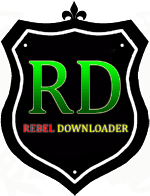Parts of a Business Letter
- 1. HeadingMost companies use letterhead--stationery with the company’s logo, name, address and other contact and identifying information. If the company does not have letterhead, the company’s full name and address should be typed at the top of the page.2. DateLetters should always include a date. You enter dates two to six lines below the heading, depending on the length of the letter. Use the full month name spelled out, then the day, followed by a comma, and then the four-digit year, for example, June 6, 2010.3. ReferenceInclude a reference line to identify a file or case number, invoice number or any other internal identifying information, if your company requires one. Some companies have specific reference codes that they place either in a reference line below the date, or at the very bottom of the letter.4. AddresseeYour letter should include the name of the addresses with her title (Ms. J. Jones, Dr. Charlene Price), followed by her company name and full address, including the postal code.5. SubjectAdding a subject line makes it easier for the reader to quickly understand the situation. Normally the subject sentence follows the word “Subject:” or “Re:” (regarding). Place the subject after the addressee’s address and before the greeting.6. SalutationThe salutation is your greeting. Most salutations begin with “Dear” followed by either the recipient’s first name, or title and last name. Endeavor to address all letters to an actual person. However, if you don’t know the person’s name, use Dear Madam/Sir, or the job title, such as Dear Accounting Manager.7. Body ParagraphsThe opening paragraph should always state why you are writing. Then, in a simple and straightforward manner, explain the situation, the solution, the suggestion or whatever other message you need to get across to the recipient. Be as brief as possible since long complicated messages often distract readers. Start a new paragraph whenever you begin a new subject.8. CloseAlways use a complimentary close. It is a short, polite closing followed by a comma. When the letter is impersonal, use “Yours truly.” If the letter is to someone above you in rank, use “Respectfully yours.” If you have a personal connection to the addressee, use “Sincerely” or “Sincerely yours.” (Ref. 1, Ref. 2)9. SignatureFour spaces below the close, type your full or business name. In the space in-between, you will hand write your signature in ink. Use black or dark blue ink for your signature.10. Identifying NotationsIf you type a letter for someone else, add identifying initials. For example if John Doe types a letter for Jane Smith, the notation would be JS:jd. Then, if you are enclosing items in the envelope, add an enclosure notation (Enc:, Encl: or Enclosures) followed by the title of the enclosures. Add the notation cc: followed by the names of everyone receiving a copy.11. PostscriptTo add information not necessarily related to the letter, like a personal note, include a postscript (P.S.) at the bottom.Format of Business Letter
Business letters may be written in any of the following styles: full block or purely block, simplified, modified block, semi-block, hanging-indented, indented, and memorandum style. The full block style has all the letter elements flush with the left margin; it is asymmetrical because there are wide white spaces on the right. It differs from the simplified style in the sense that the salutation and the complimentary close are absent in the latter. The modified block style, the semi-block style, and the hanging-indented style share the same format, that is, all the letter elements, except the salutation, complimentary close, and signature (which are begun at the center) are flush with the left margin. The three differ in paragraph indention: the modified block has no indention, the semi-block style has a normal or standard indention, while the hanging-indented style, as its name suggests, has a hanging indention. The indented style has most of its elements indented. The memorandum style has a unique format. It has a header with the reference line, date line, subject line, TO line, FROM line, and THRU line. A demarcation line divides the header and the body of the letter. Examples of the letter styles are found below.
Sumber :
http://www.studyenglishtoday.net/business-letter-parts.html
http://bigdeday.blogspot.com/2013/10/business-letters.html







